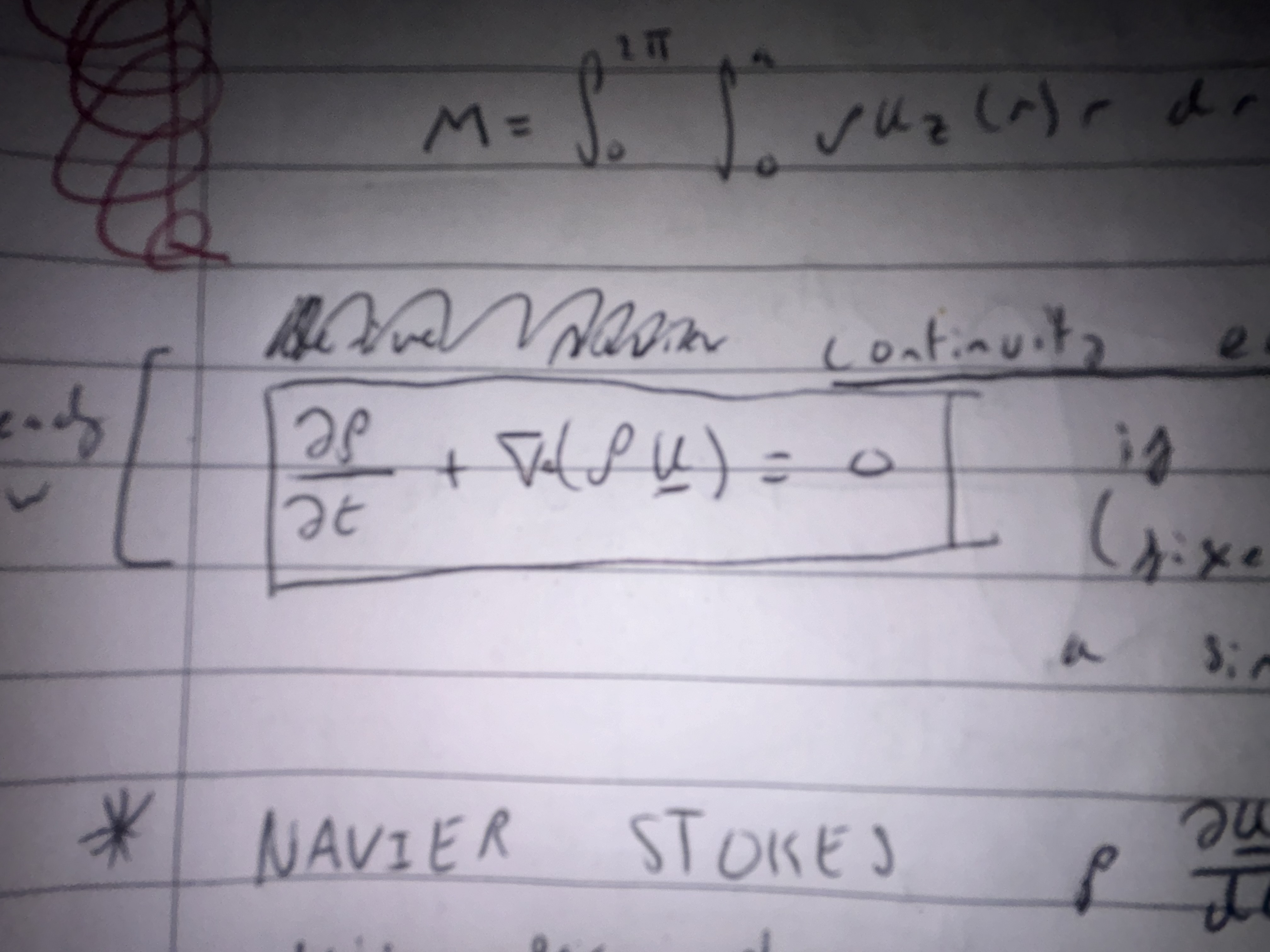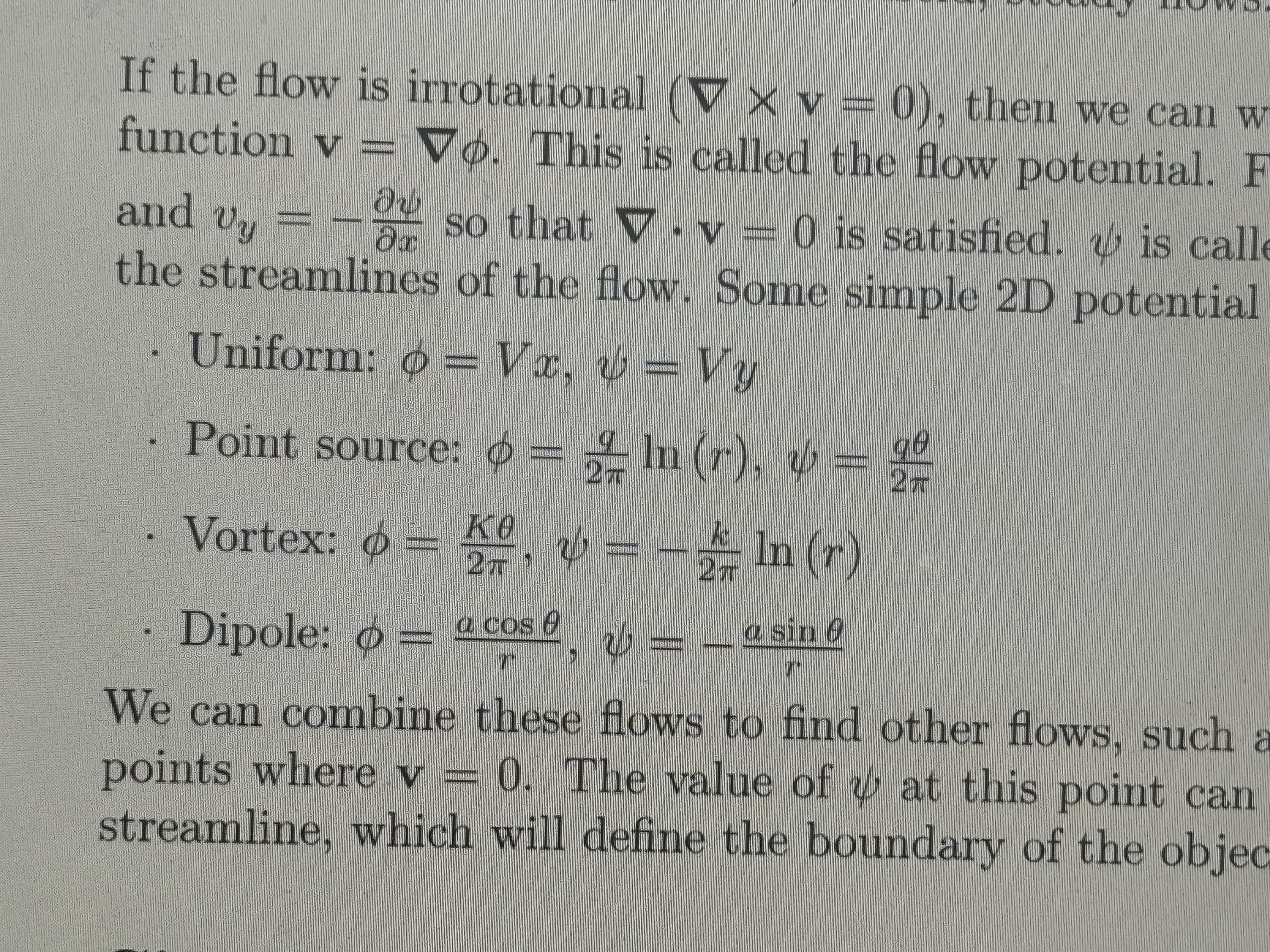fluid mechanics
1/41
There's no tags or description
Looks like no tags are added yet.
Name | Mastery | Learn | Test | Matching | Spaced |
|---|
No study sessions yet.
42 Terms
What is a fluid
A substance which cannot resist a shear force without motion and doesn’t return to its original state when stress is removed
Define stress
Defined as tau which = force/ Area. It has the same dimensions as pressure.
Define strain
Strain is defined as e which equals the change in X(y) / change in y (partial)
X(y) represents change in x dim
What is the small displacement strain approximation
e = tan (theta) = theta
Theta is the angle between the y axis and the changed y dimension of the cube
What is the relation of tau and e in a solid
Tau = G e where G is the shear modulus
Compare removing stress from a cube of solid to a cube of fluid
If stress is removed from a solid. It either stays in that configuration or returns to original position (depending on deformation)
For a fluid the angle theta will increase as time increases sunce fluids have ndiferent bonding therefore no restoring force
Relate stress and strain in a fluid
Tau = mu (change in strain/change in time)
Mu represents the viscosity
What is a lagrangian fluid element
AN LFE moves with the fluid such that there is no flow in or out of the element
U = d/dt (r-r_0) = (dx/dt)i+(dy/dt)j+(dz/dt)z
What is an eulerian fluid element
An eulerian fluid element is fixed in space and the mass of the element may change
u= u(x,y,z,t)
What is a streamline
A 3D curve which at a fixed time t at each location is tangential to the local vector of u
How can we solve to find the streamline equations
let dr be along a streamline. So clearly it is parallel to u hence dr=d(lambda)u where d(lambda) is a scalar constant
Hence dx=d(lambda)u_x (same for y and z) then equate d(lambdas)
When is flow laminar
Flow is smooth typically the same shape as the surface, for parallel plates flow is also parallel
When is flow viscous
Viscosity is important
When is flow steady
u(r,t)=u( r ) and not dependent on time
What is the viscous force
Fluid element with top and bottom area A = dx dz
Then the viscous force will be F_v = A(mu)(du_x/dy)
= (function above evaluated at y+dy)-(function evaluated at y)
Note here dx etc is delta where obvious
As dxdydz→0 F_v =mu (d²u_x/dy²) dxdydz
What is the pressure force
F_v= -F_p = -dp/dx deltaxdeltaydeltaz
From here we can cancel out all the delta terms and equate everything to -Q a constant as both sides are dependent on different things.
Solve the pressure force, viscous force equation for the two fixed plate 2d scenario
Mu (d²u_x/dy²)=dp/dx = -Q
u_x(y) = -Q/(2mu) y² +Ay + B
A and B are found from BCs u_x(a)=u_x(-a)=0
Q= -dp/dx = ( P_1-P_2)/L
what is poiselle flow
Cylindrical steady, symmetric, viscous, laminar flow through a pipe
What is the average molecular speed
U_mol is the flow due to random thermal motion
What is the kinematic viscosity
v(accent) = mu/rho
Rho is the fluid mass density
What is the Reynolds number
Re = (rho_0)(L_0)(u_0)/mu
Rho is the typical mass density
L is the characteristic length
u is the typical flow speed
If the Reynolds number is small then the flow is giscous dominated
What is the continuity equation for steady flow
If the fluid is incompressible then div(u)=0

What is the strouhal number
St=D/Pv (P here is the period)
What is the vorticity
w = grad (u) and if it = 0 the flow is irrotational
What is kelvins circulation theorem
The circulation around a closed loop moving with the fluid is constant for inviscid flow.
DK/dt = d/dt (integral u•dl)=0
What is div u in cylindrical co odds
1/r d_r(ru_r) + 1/r d_theta(u_theta) + d_z(u_z)
What is grad u in cylindrical
1/r outside grad and theta top term has r and theta u has r multi
Gauss theorem
Integral A•ds= integral div(A)dV
Stokes theorem
Integral (A•dl) = integral grad(A)•dS
How to show irrot-/→not rot
U=A/r theta hat
Uniform potential flow
U = vi = grad phi
Phi = ux+ const
Horizontal streamlines
What is the boundary layer thickness
Delta = d/Re^1/2
Explain Magnus effect
The force per unit length on a 2D body in relative motion with a fluid with virticity and circulation is L=rho uxk
State navier stokes equation
P du/dt + rho (div(u))u = -grad(rho)…
Give examples of simple 2D potential flows

State the continuity equation
drho/dt + rho div(u)= 0
Action equation
A = integral L dt
Electrostatic potential energy
V = 1/ 4 pi Epsilon_0 (q1q2/r)
Generalised Hamiltonian
H = q* dL/dq* -L
Posselle flow
V_z ( r ) = Q/ 4 mu (a² -r²)
Adianatic pressure equation thingy
d/dt (P/ rho^r) =0
Drag force
F = b rho v² A/2